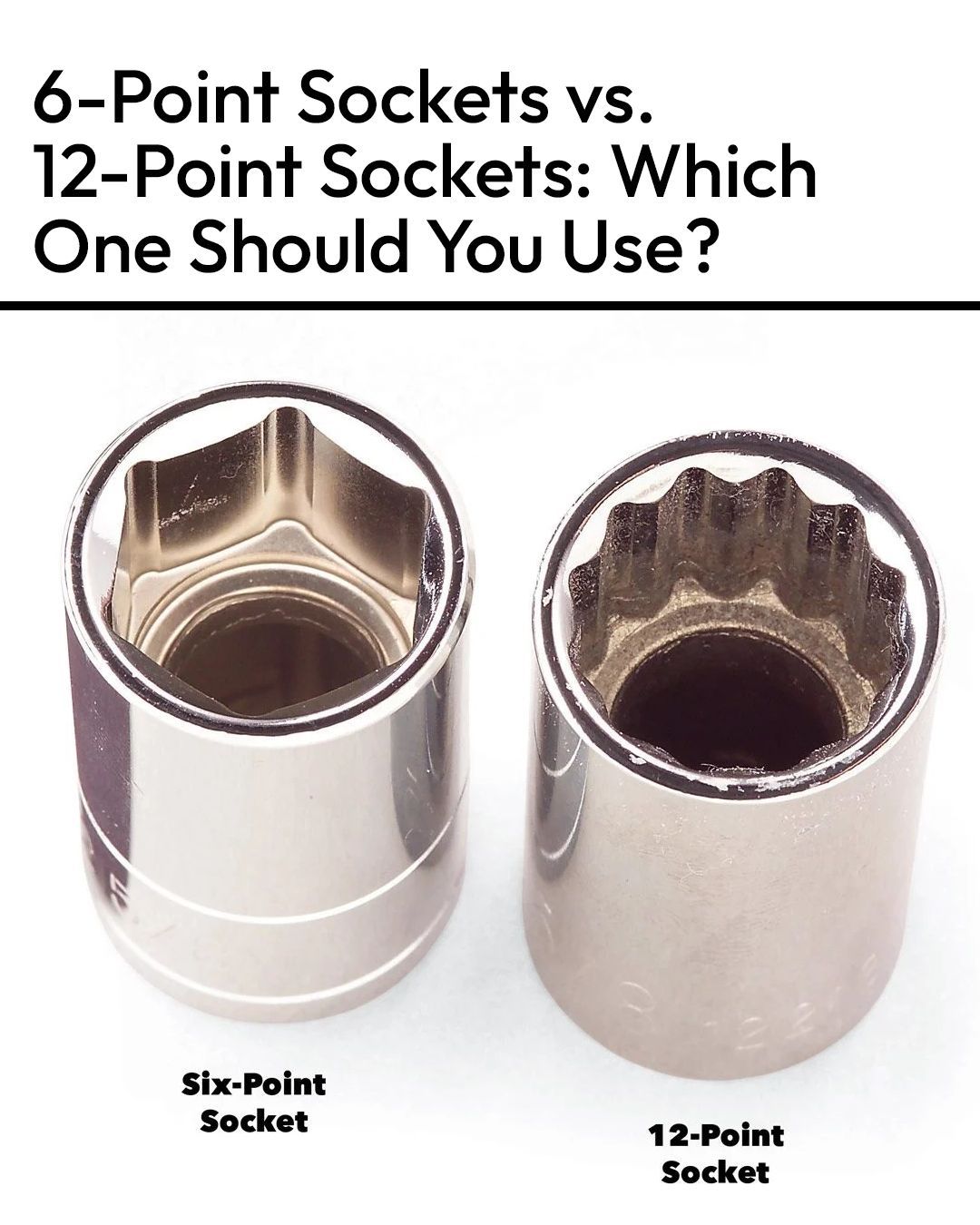ADVERTISEMENT
Title: “6-Point Sockets vs. 12-Point Sockets: Which One Should You Use?”
When it comes to tools, particularly sockets, understanding the difference between 6-point and 12-point sockets is crucial for selecting the right one for your task. Whether you’re working on a car, assembling furniture, or tackling a DIY project, using the appropriate socket can make a significant difference in the ease and success of your work. In this article, we’ll break down the key differences between 6-point and 12-point sockets, helping you determine which one you should use depending on the job at hand.
What Are 6-Point and 12-Point Sockets?
Both 6-point and 12-point sockets are designed to fit over fasteners, allowing you to tighten or loosen bolts or nuts with the help of a wrench or ratchet. The primary difference between the two lies in the number of contact points around the inside of the socket.
- 6-Point Socket: As the name implies, a 6-point socket has six contact points inside the socket. These points correspond to the edges of a hexagonal bolt or nut, providing a solid grip.
- 12-Point Socket: A 12-point socket has twelve contact points, which means it can fit over fasteners with a 12-sided (double hexagonal) shape, offering greater flexibility when it comes to positioning.
1. Grip and Durability
6-Point Sockets:
- Better Grip: The 6-point design is superior for gripping fasteners, especially when they are tightly torqued or have become rounded over time. The fewer contact points mean more surface area for the socket to press against, reducing the risk of slipping or damaging the fastener.
- Less Risk of Rounding: Because the 6-point socket grips more of the fastener’s flat surfaces, it is less likely to round off corners, which can be a significant issue when working with old or worn bolts.
- Stronger Design: The 6-point socket has a stronger design due to the reduced number of contact points, which also distributes the pressure more evenly.
12-Point Sockets:
- Greater Flexibility: The main advantage of a 12-point socket is that it allows for more positioning flexibility. With twelve points, you can rotate the socket by 30-degree increments, making it easier to fit in tight or awkward spaces. This flexibility is especially useful in confined spaces or when access to the fastener is limited.
- Increased Risk of Slipping: While 12-point sockets can be more convenient for quickly positioning, they don’t offer the same strong grip as 6-point sockets, especially on fasteners that are corroded or heavily torqued. The smaller contact points can increase the chance of slipping or rounding off the fastener.
2. Ease of Use in Tight Spaces
6-Point Sockets:
- Limited Range of Motion: Since 6-point sockets only engage at 60-degree intervals, this can make it harder to fit the tool in tight spaces, especially when you’re dealing with smaller, recessed fasteners. In such cases, a 12-point socket can be more useful.
12-Point Sockets:
- Better for Tight Spaces: Due to the 12 contact points, the socket can fit onto the fastener at more positions, which allows for easier access in tight, confined spaces where turning is difficult. This makes the 12-point socket a favorite for automotive repairs or assembly projects where space constraints are common.
3. Which One is Better for Tightening or Loosening Fasteners?
6-Point Sockets:
- Ideal for High Torque Applications: If you’re working with bolts that require a lot of torque—like in automotive work, heavy machinery, or plumbing—6-point sockets are the better option. They provide a strong grip on the bolt or nut, making it easier to tighten or loosen fasteners without damaging them.
12-Point Sockets:
- Better for Quick Jobs: When torque isn’t as critical or the fasteners aren’t subjected to excessive strain, 12-point sockets can be used for light to moderate tightening or loosening. They are often found in projects that require less force, such as electrical work or assembling furniture.
4. Socket Strength and Durability
6-Point Sockets:
- More Durable for High Stress: Because of their design, 6-point sockets can handle more stress without breaking or deforming. The broader contact area helps prevent excessive wear and tear on both the socket and the fastener, making them the better choice for high-stress situations.
- For Complete Cooking STEPS Please Head On Over To Nex
